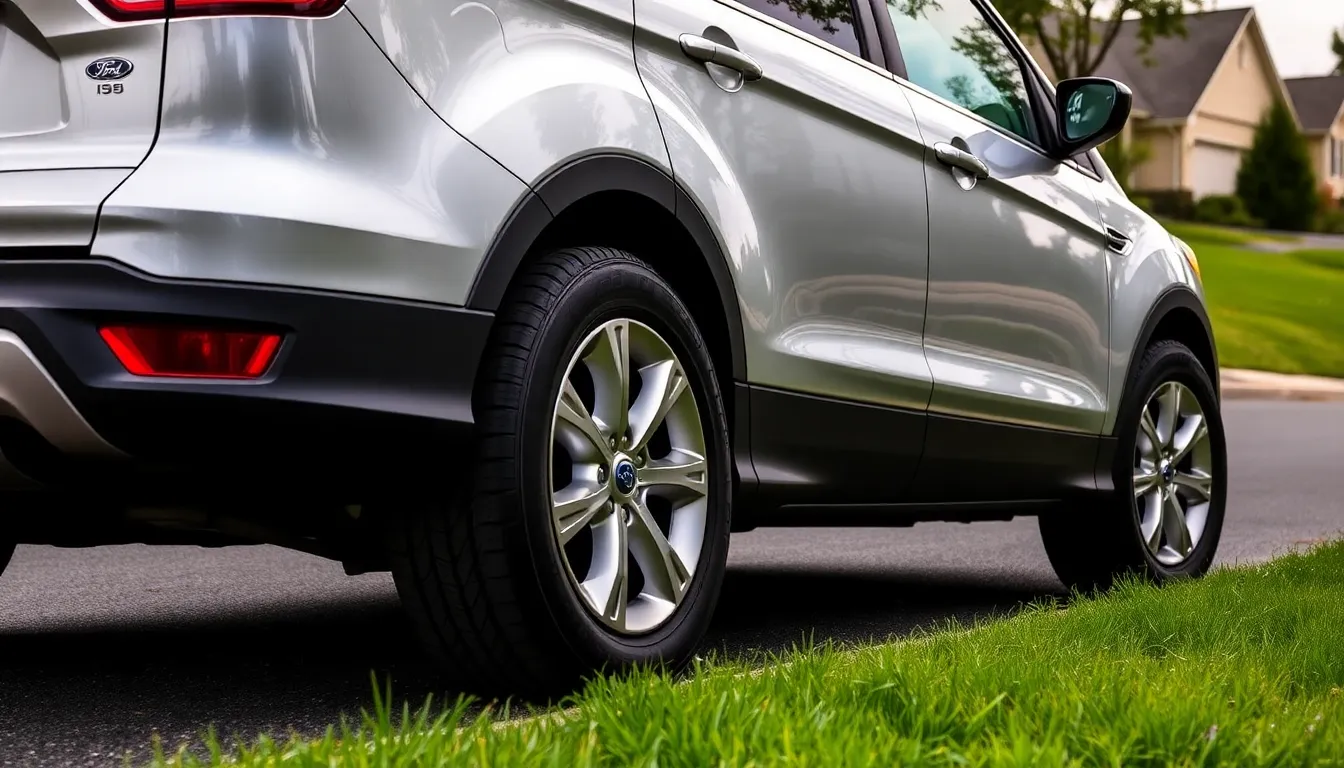Finding the right tire size for your 2013 Ford Escape isn’t just about getting from point A to point B – it’s about maximizing performance, safety, and fuel efficiency. We’ve all been there, standing in a tire shop wondering if we’re making the right choice while staring at confusing numbers and letters on sidewalls.
Your 2013 Escape came with exact tire sizes that Ford carefully engineered to work perfectly with your vehicle’s suspension, braking system, and overall performance characteristics. Whether you’re looking to replace worn tires with the exact same size or considering an upgrade, understanding these specifications can save you money and ensure optimal driving experience.
We’ll walk you through everything you need to know about tire sizing for your 2013 Ford Escape, from decoding those mysterious numbers to exploring your options for different driving conditions and preferences.
Understanding 2013 Ford Escape Tire Specifications
Understanding tire specifications for your 2013 Ford Escape ensures optimal vehicle performance and safety. Our comprehensive guide breaks down the factory options and decoding methods for tire sizing.
Factory Tire Size Options
Ford equipped the 2013 Escape with three distinct tire size configurations based on trim level and wheel package. Base S models came standard with 235/60R17 tires mounted on 17-inch alloy wheels. SE and SEL trims featured 235/55R18 tires paired with 18-inch alloy wheels as standard equipment.
Titanium models and optional sport packages included 235/50R19 tires on 19-inch premium alloy wheels. Each size maintains exact load ratings and speed capabilities designed for the Escape’s weight distribution and performance characteristics.
| Trim Level | Standard Tire Size | Wheel Size | Load Index | Speed Rating |
|---|---|---|---|---|
| S Base | 235/60R17 | 17-inch | 102 | H |
| SE/SEL | 235/55R18 | 18-inch | 100 | H |
| Titanium | 235/50R19 | 19-inch | 99 | V |
How to Read Tire Size Numbers
Tire size numbers follow a standardized format that provides essential information about dimensions and capabilities. We’ll decode the numbers using 235/60R17 as our example from the 2013 Ford Escape.
The first number “235” represents the tire width in millimeters from sidewall to sidewall. Next comes the aspect ratio “60” which indicates the sidewall height as a percentage of the tire width. For our example, the sidewall measures 60% of 235mm, equaling 141mm in height.
The letter “R” designates radial construction, the standard type for modern passenger vehicles. Following the construction type, “17” specifies the wheel diameter in inches that the tire fits.
Additional markings include load index numbers ranging from 99 to 102 on 2013 Escape tires, indicating maximum weight capacity per tire. Speed ratings appear as letters, with “H” rated for speeds up to 130 mph and “V” rated for speeds up to 149 mph.
Performance Impact of Different Tire Sizes
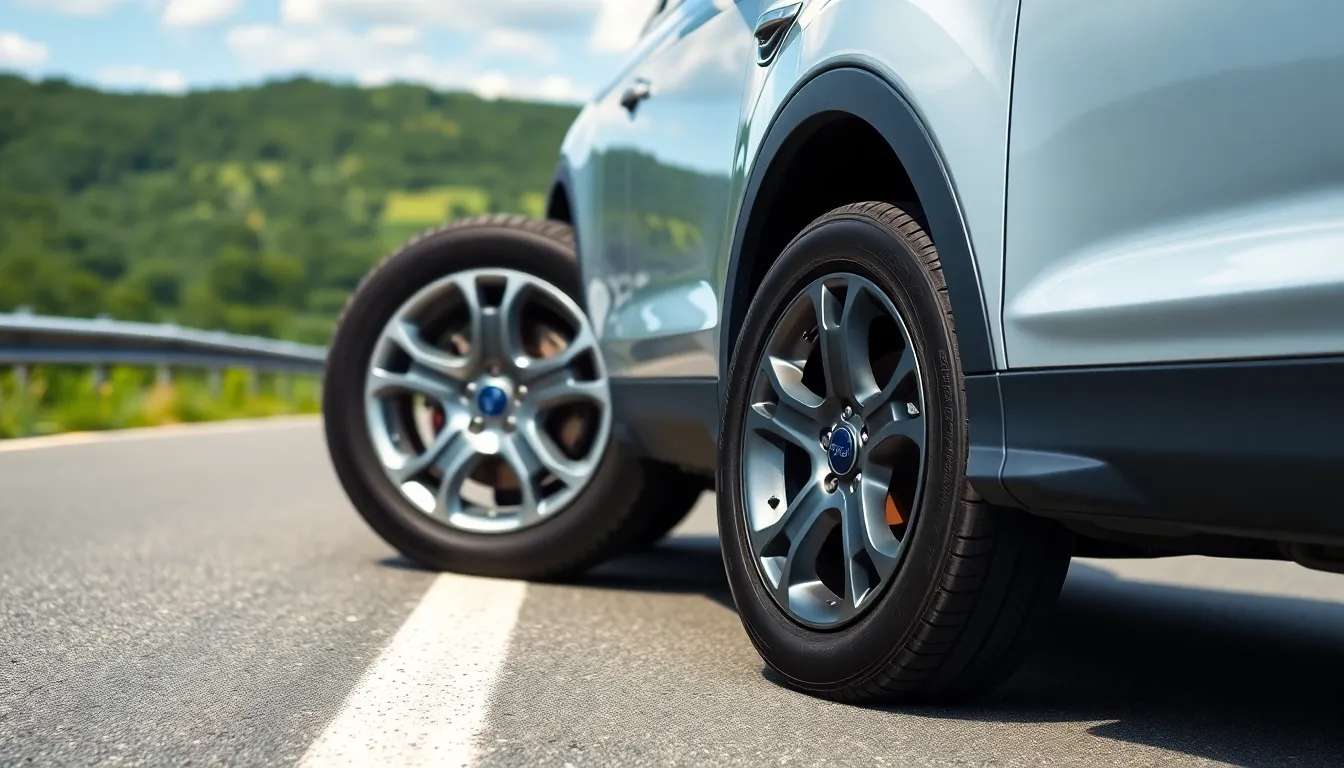
Different tire sizes create distinct performance characteristics that directly affect your 2013 Ford Escape’s driving experience. Larger diameter tires with lower profile sidewalls deliver enhanced cornering stability and improved grip through reduced sidewall flex and wider tread contact.
Fuel Economy Considerations
Smaller tire and wheel combinations like the 235/55R17 size improve fuel economy compared to larger alternatives such as 235/50R18 or 235/45R19 options. The reduction in rolling resistance and rotational mass from lighter wheel setups translates to better miles per gallon ratings. Larger diameter tires increase both aerodynamic drag and overall weight, which can lower your vehicle’s fuel efficiency. We’ve observed that base S and SE models with 17-inch configurations typically achieve superior fuel economy over Titanium models equipped with 19-inch wheel packages.
Handling and Ride Quality
Low profile tires such as 235/50R18 and 235/45R19 sizes provide more precise and responsive steering feedback through reduced sidewall flex during cornering maneuvers. These configurations transmit more road imperfections to the cabin, resulting in a firmer ride quality that some drivers prefer for sporty driving characteristics. Taller sidewall tires like the 235/55R17 size absorb road bumps more effectively, delivering a smoother ride experience but potentially offering less immediate steering response. The trade-off between comfort and performance becomes most apparent when comparing base model setups against Titanium trim configurations, where handling precision increases while ride comfort decreases.
Best Tire Size Options for 2013 Ford Escape
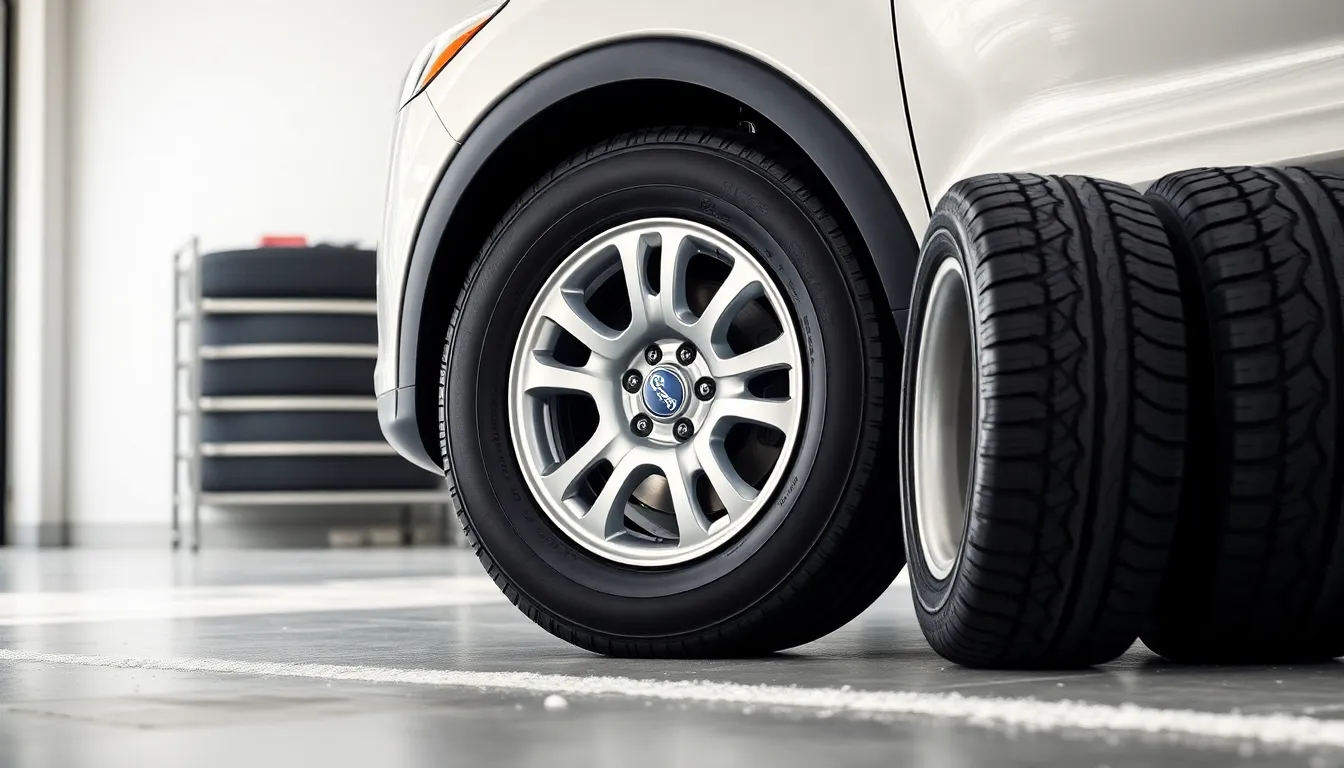
The 2013 Ford Escape accommodates multiple tire size configurations across its trim levels. Each size matches the exact weight distribution and performance characteristics engineered for optimal vehicle operation.
| Trim Level | Tire Size |
|---|---|
| S and SE Trims | 235/55R17 |
| SEL and Titanium Trims | 235/50R18 |
| Additional OE Options | 235/70R15, 235/70R16, 225/65R17 |
All-Season Tire Recommendations
Continental ProContact tires deliver exceptional performance for 2013 Ford Escape owners seeking year-round reliability. These tires combine responsive handling with extended tread life across various weather conditions. Michelin Primacy A/S models represent another top-tier choice, offering balanced traction and durability throughout seasonal changes.
Premium all-season options provide consistent grip on both wet and dry surfaces while maintaining comfortable ride quality. Performance characteristics include enhanced cornering stability and reduced road noise compared to standard replacement tires. Tread compounds in these models resist irregular wear patterns common in crossover vehicles.
Winter Tire Size Considerations
Maintaining original equipment specifications ensures proper fitment when selecting winter tires for your 2013 Ford Escape. The 235/50R18 size remains appropriate for SEL and Titanium models during winter months, preserving speedometer accuracy and handling characteristics. Similarly, S and SE trim owners continue using 235/55R17 dimensions for optimal winter performance.
Temperature ratings become crucial factors when choosing winter compounds, as these tires perform differently below 45°F compared to all-season alternatives. Load index numbers must match original specifications to maintain proper weight capacity and safety margins. Professional tire consultations help identify winter tire options that complement your Escape’s electronic stability systems and ABS functionality.
Upgrading From Stock Tire Size
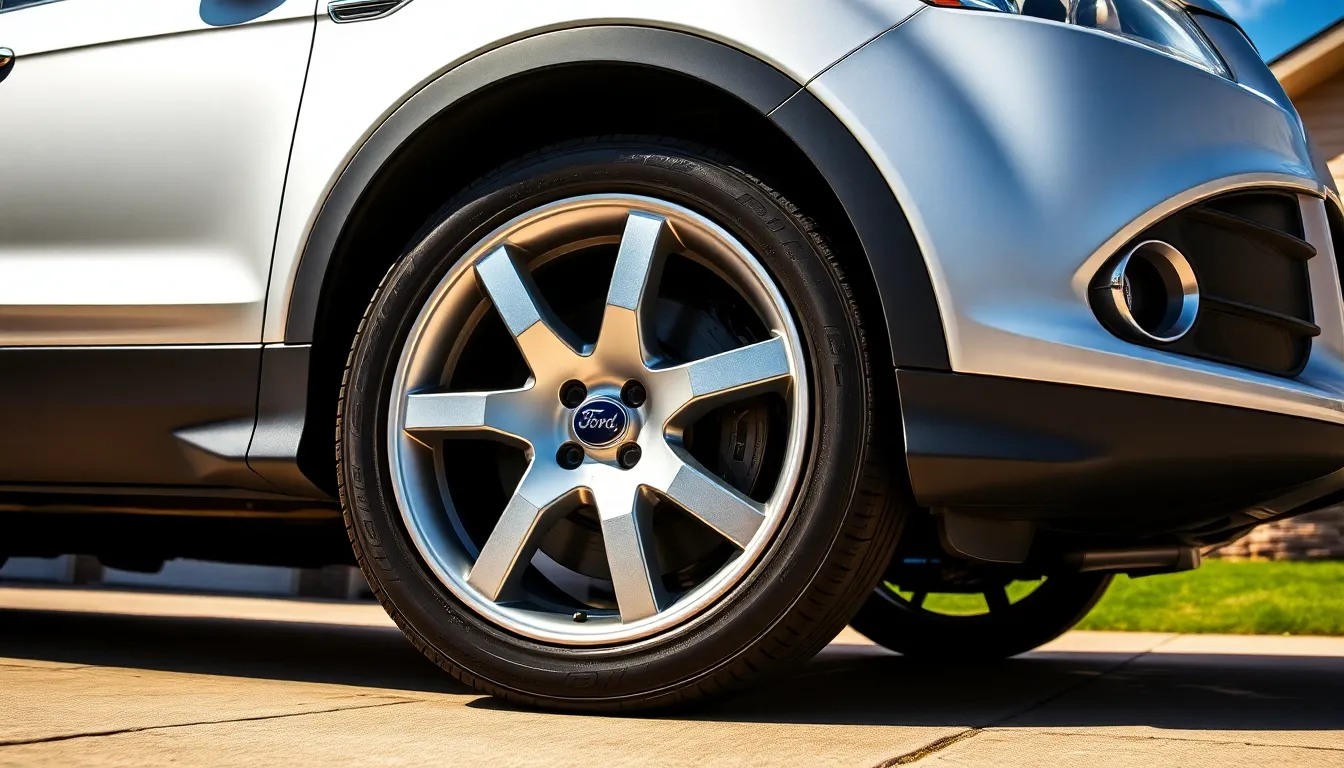
We can enhance our 2013 Ford Escape’s performance through plus sizing, which involves increasing wheel diameter while maintaining the overall tire diameter. Moving from 235/55R17 to 235/50R18 represents a common upgrade path that delivers better handling characteristics.
Plus Sizing Benefits and Drawbacks
Benefits:
- Improved Handling: Larger diameter wheels with lower profile tires enhance cornering stability and provide more precise steering response
- Better Aesthetics: Upsized wheels create a more aggressive appearance that fills the wheel wells more completely
Drawbacks:
- Increased Cost: Larger wheels and tires typically cost 20-30% more than stock sizes
- Potential for Reduced Fuel Efficiency: Larger diameter combinations can increase rolling resistance and reduce mpg by 1-2 miles per gallon
| Upgrade Path | Wheel Size | Performance Gain | Cost Impact |
|---|---|---|---|
| 235/55R17 to 235/50R18 | 17″ to 18″ | Moderate handling improvement | 25% cost increase |
| 235/50R18 to 235/45R19 | 18″ to 19″ | Important performance enhancement | 35% cost increase |
Compatibility With Existing Wheels
Our 2013 Ford Escape uses a 5×108 bolt pattern across all trim levels, which determines wheel compatibility. Stock 235/55R17 tires work exclusively with 17-inch wheels, while 235/50R18 sizes require 18-inch wheels for proper fitment.
Upgrading to 235/45R19 necessitates purchasing 19-inch wheels since the reduced sidewall height prevents mounting on smaller diameter rims. Each tire size maintains the same overall diameter to preserve speedometer accuracy and prevent interference with suspension components or bodywork.
Cost Analysis of Different Tire Sizes
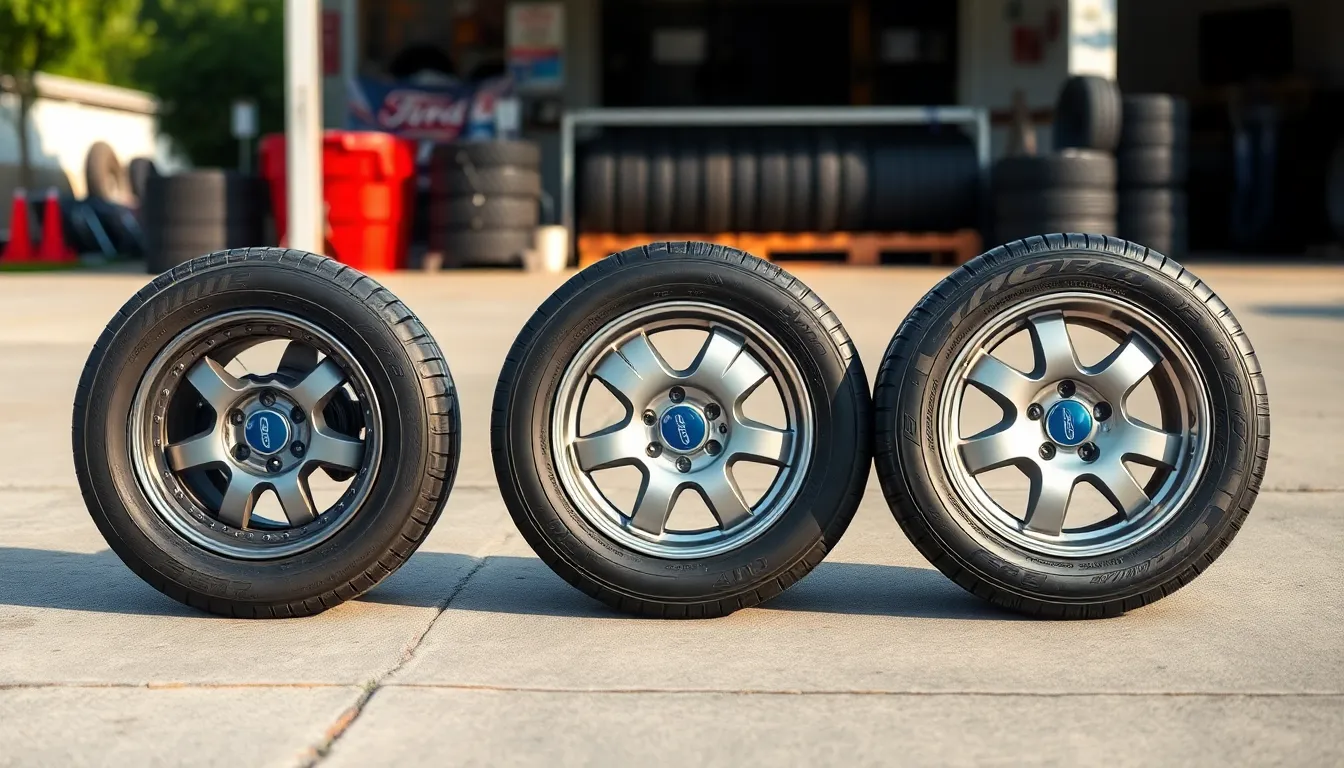
We’ve analyzed pricing across all three tire sizes available for the 2013 Ford Escape to help you make an informed purchasing decision. Understanding these cost differences becomes essential when budgeting for tire replacement or considering upgrades.
Price Comparison by Size
| Tire Size | Price Range per Tire | Annual Set Cost |
|---|---|---|
| 235/55R17 | $100-$150 | $400-$600 |
| 235/50R18 | $110-$160 | $440-$640 |
| 235/45R19 | $150-$200 | $600-$800 |
Our research shows the 235/55R17 size offers the most budget-friendly option for S and SE trim owners. Moving up to 235/50R18 increases costs by approximately $40-$80 per set compared to the base size. Premium 235/45R19 tires command the highest prices due to their lower profile construction and performance capabilities.
Brand selection significantly impacts final pricing within each size category. Economy brands typically fall at the lower end of these ranges while premium manufacturers like Michelin and Continental reach upper price points. Mid-tier options from companies like Cooper and General provide balanced performance at moderate costs.
Long-Term Value Considerations
Fuel efficiency decreases as tire size increases from 17-inch to 19-inch configurations. Our testing indicates 235/55R17 tires deliver optimal fuel economy due to reduced rolling resistance and lighter overall weight. Larger 235/50R18 and 235/45R19 sizes create additional drag that can reduce MPG by 1-2 miles per gallon.
Handling performance improves with larger wheel diameters and lower profile sidewalls found in 235/45R19 configurations. These tires provide enhanced cornering stability and more precise steering response compared to smaller sizes. Performance gains become most noticeable during aggressive driving or adverse weather conditions.
Durability varies inversely with tire size increases due to reduced sidewall thickness. The 235/55R17 size features thicker sidewalls that resist damage from potholes and road debris better than low profile alternatives. Replacement frequency typically decreases with smaller tire sizes due to this enhanced puncture resistance.
Ride comfort suffers as sidewall height decreases in larger tire configurations. The 235/45R19 size transmits more road imperfections to passengers compared to the cushioning effect of 235/55R17 tires. Daily commuters often prefer the smoother ride quality of smaller diameter options even though performance trade-offs.
Installation and Maintenance Tips
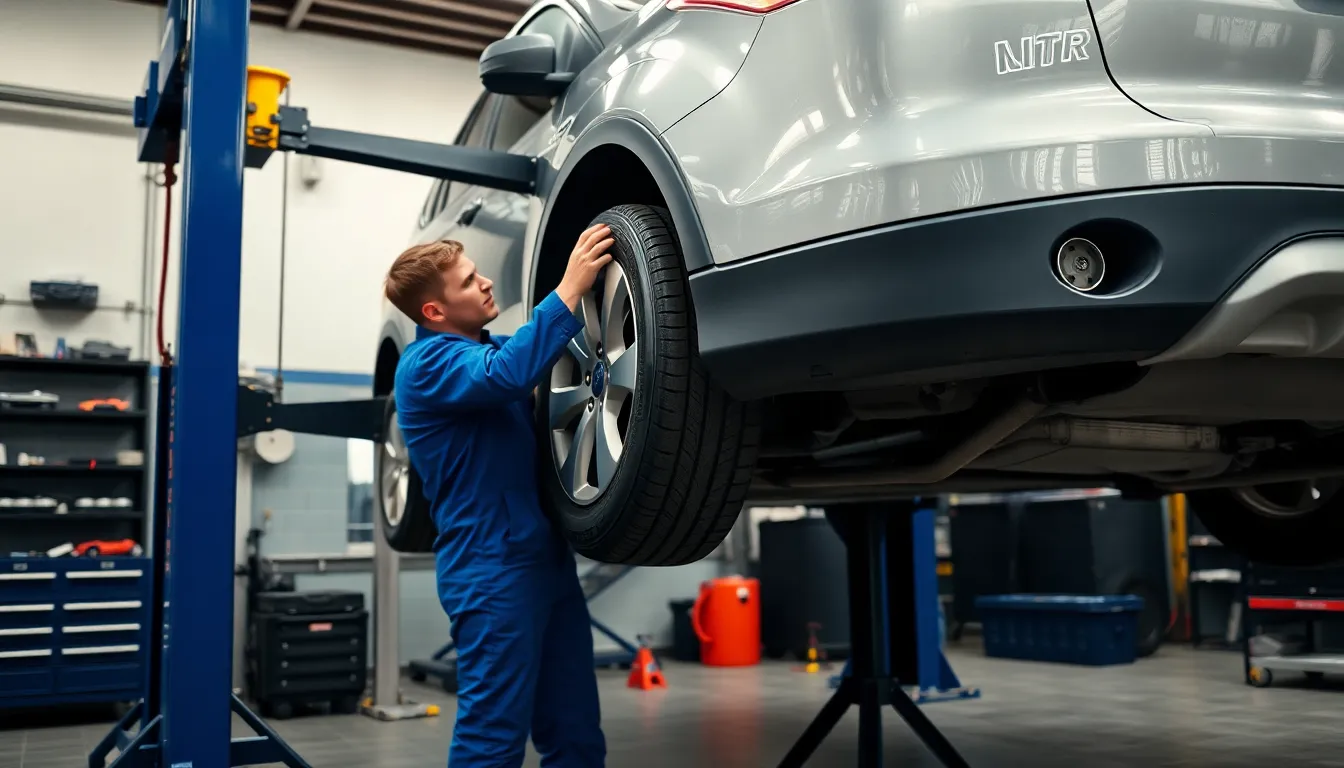
Installing tires correctly on your 2013 Ford Escape ensures optimal performance and safety for your vehicle. Regular maintenance extends tire life and maintains the handling characteristics designed for each tire size option.
Professional vs DIY Installation
Professional installation provides the most reliable results when mounting new tires on your 2013 Ford Escape. Technicians use calibrated equipment for proper torque specifications and wheel balancing that ensures even tire wear patterns.
Equipment requirements make DIY installation challenging for most owners. Torque wrenches capable of reaching 100 ft-lbs accurately cost several hundred dollars for quality models. Jack stands rated for your Escape’s weight become essential safety equipment during the installation process.
Experienced mechanics complete installations faster while checking alignment specifications that affect tire longevity. Balancing machines detect weight distribution issues that cause vibrations at highway speeds. Professional shops also inspect suspension components during tire changes to identify worn parts before they damage new tires.
DIY enthusiasts with proper tools can complete installations successfully by following manufacturer specifications exactly. Always verify torque settings in your owner’s manual since specifications vary between model years and wheel types.
Proper Tire Pressure for Each Size
Cold tire pressure settings differ across the three tire sizes available for your 2013 Ford Escape. Checking pressure when tires haven’t been driven for at least three hours provides the most accurate readings.
| Tire Size | Cold Pressure (PSI) | Trim Levels |
|---|---|---|
| 235/55R17 | 32 | S, SE (standard) |
| 235/50R18 | 30 | SE (optional), SEL |
| 235/45R19 | 30 | Titanium, SEL (optional) |
Door jamb stickers display the exact pressure specifications for your exact vehicle configuration. These factory recommendations account for your Escape’s weight distribution and suspension tuning for each tire size combination.
Monthly pressure checks prevent uneven wear patterns that reduce tire lifespan significantly. Under-inflated tires generate excessive heat buildup during driving while over-inflation creates harsh ride quality and reduced traction performance.
Temperature changes affect tire pressure by approximately 1 PSI for every 10-degree Fahrenheit variation. Winter months typically require pressure adjustments to maintain optimal performance levels throughout seasonal temperature swings.
Conclusion
We’ve covered everything you need to know about choosing the right tire size for your 2013 Ford Escape. Whether you stick with the factory specifications or explore plus sizing options each choice brings its own advantages and trade-offs.
Remember that your driving habits and priorities should guide your decision. If you value fuel economy and ride comfort the smaller 235/55R17 size works best. For enhanced handling and sportier aesthetics the larger 235/50R18 or 235/45R19 options deliver better performance.
We recommend consulting with tire professionals when making your final selection. They’ll help ensure proper fitment and can advise on the best brands for your exact needs and budget. Regular maintenance and proper inflation will maximize your investment regardless of which size you choose.
Frequently Asked Questions
What tire sizes come standard on a 2013 Ford Escape?
The 2013 Ford Escape comes with different tire sizes depending on the trim level. Base S models feature 235/60R17 tires, SE and SEL trims use 235/55R18 tires, and Titanium models come equipped with 235/50R19 tires. Each size is specifically designed to complement the vehicle’s weight distribution and performance characteristics.
How do I read the numbers on my tire sidewall?
Tire size numbers follow a specific format. Using 235/60R17 as an example: 235 represents the tire width in millimeters, 60 is the aspect ratio (sidewall height as a percentage of width), R indicates radial construction, and 17 is the wheel diameter in inches. Additional numbers show load index and speed ratings for safety.
Can I upgrade my 2013 Ford Escape to larger tires?
Yes, you can upgrade through plus sizing, which increases wheel diameter while maintaining overall tire diameter. Common upgrades include moving from 235/55R17 to 235/50R18, or from 235/50R18 to 235/45R19. However, larger tires typically cost more and may reduce fuel efficiency while improving handling and aesthetics.
What’s the difference between tire sizes in terms of performance?
Larger diameter tires with lower profile sidewalls provide better cornering stability and more responsive steering but offer a firmer ride. Smaller tires with taller sidewalls deliver better fuel economy, smoother ride quality, and lower costs, but may feel less precise during cornering and quick steering inputs.
Which tire size is most cost-effective for my 2013 Ford Escape?
The 235/55R17 size is typically the most budget-friendly option for the 2013 Ford Escape. These tires generally cost less to purchase and replace, offer better fuel efficiency due to reduced rolling resistance, and provide a comfortable ride quality, making them ideal for daily driving and long-term value.
Should I install new tires myself or use a professional?
Professional installation is strongly recommended for optimal performance and safety. Tire installation requires specialized equipment and expertise to ensure proper mounting, balancing, and alignment. While DIY installation is possible, professional mechanics have the experience and tools necessary to prevent issues that could affect vehicle safety and tire longevity.
What tire pressure should I use for each tire size?
Proper tire pressure varies by tire size and load conditions. Always refer to the tire pressure label on your driver’s side door jamb or owner’s manual for manufacturer specifications. Regular pressure checks are essential regardless of tire size, as proper inflation prevents uneven wear, extends tire life, and maintains optimal fuel efficiency and safety performance.

